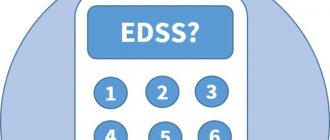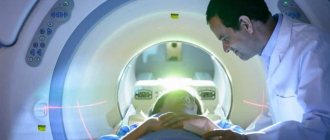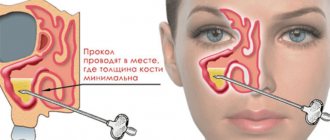Causes of disability
As noted above, epilepsy is part of a group of neurological disorders in the functioning of the brain and is accompanied by specific seizures. And although epileptic seizures are not a necessary phenomenon, when they occur the patient is not able to be responsible for his actions, and may not even deliberately cause harm to himself (for example, in the event of an unsuccessful fall, etc.).
It is noteworthy that outside of seizures, the life of an epileptic does not have any restrictions and is quite ordinary. For this reason, many do not seek special status. The need for it arises only in those whose seizures are quite frequent and dangerous, including for others. Then you need to go through the ITU and establish the degree of restrictions with a specific group.
It is relevant to assign preferential status if the patient has to:
- work as a vehicle driver;
— carry weapons, come into contact with radioactive and chemical substances;
- use complex mechanisms, be at heights, under water, etc.
ITU experts prohibit these types of activities if epilepsy manifests itself quite clearly and has led to persistent disorders of body functions.
In particular, disability is established if, during the period between epileptic attacks, it is necessary to:
- regularly undergo medical examination and examination;
- take medications that have side effects.
According to experts, disabled epileptics may experience behavioral disorders, mental disorders, intellectual degradation and visible manifestations of epileptic disease on the face.
Important
! To establish a special status for adults with epilepsy, it is important to document seizures.
Causes, types and symptoms of the disease
The symptoms of the disease are characterized by seizures, which are specific, including whether they occur without or with seizures, whether the person loses consciousness or not. Seizures also affect individual parts of the body or the whole body.
At a time when attacks do not appear, it is impossible to conclude from a person’s appearance that he has the disease in question. For this reason, people around him are unaware of such a problem.
Distribution of patients into groups
While seizures do not appear, a person can lead a normal lifestyle, work, study, etc. In this regard, the presence of seizures is not a basis for assigning disability.
In general, the disease is characterized by the occurrence of an extensive attack, which is expressed by convulsions. An attack can begin at any time, without connection with factors related to external influences. Some patients, a day or two before the attack, experience general malaise, disturbed sleep or appetite, headaches, and irritability.
Often, during an attack, a person loses consciousness and falls, which is accompanied by a cry of a peculiar type. This sound is associated with the occurrence of a spasm in the glottis.
Symptoms of epilepsy
During convulsions, the body and limbs are stretched, the head is thrown back, and the veins located in the neck swell. The man's face becomes pale, his jaw clenches. Foaming at the mouth is also a sign of epilepsy.
In practice, a classification of attacks has been developed, depending on the reasons:
- arising in the right or left hemisphere of the brain, or in the deep parts;
- primary and secondary;
- with or without loss of consciousness.
What laws govern
Now let’s look at the regulations that regulate the procedure for establishing status at the state level, these are:
— Federal Law of November 24, 1995 No. 181-FZ (as amended on October 30, 2017) “On the social protection of disabled people in the Russian Federation”;
— Decree of the Government of the Russian Federation of February 20, 2006 No. 95 (as amended on August 10, 2016) “On the procedure and conditions for recognizing a person as disabled.”
It is also worth highlighting the following Orders of the Ministry of Labor and Social Protection of the Russian Federation:
— dated October 11, 2012 No. 310n (with additions and amendments dated December 29, 2021) “On approval of the Procedure for the organization and activities of ITU federal government institutions”;
— dated January 29, 2014 No. 59n “On approval of the Administrative Regulations for the provision of public services for conducting MSE”;
- dated August 27, 2021 No. 585n “On classifications and criteria used in the implementation of medical and social examination of citizens by federal government agencies of the ITU.”
Do they give a disability group?
If there are factors limiting life activity, a patient with epilepsy is given disability. Disability due to epilepsy in adults is confirmed in the presence of the following factors:
- one of these factors is the presence of epileptic seizures. Frequent repetition of epileptic seizures leads to limitation of the patient’s life activity; an attack can begin at any time and anywhere - in transport, at work, while driving down the street. As a result, the patient’s quality of life decreases - he is forced to constantly take medications for epilepsy, which have side effects and are quite expensive, be constantly observed by a neurologist, be examined by a psychiatrist after a certain period of time, and periodically undergo a full examination;
- epilepsy may be accompanied by a change in the patient’s character and personal qualities for the worse, and the appearance of behavioral disorders. Personality changes associated with mental disorders also relate to factors limiting the patient’s life activity and serve as the basis for registration of disability due to epilepsy;
- epilepsy may be accompanied by paralysis, paresis, and other motor disorders that significantly limit the patient’s life activities;
- epilepsy can be combined with visual and hearing impairment, which is also a factor in limiting life activity.
Doctors are often asked the question: “Is disability given for symptomatic focal epilepsy? Is it possible for a child to get a disability with cryptogenic epilepsy?” Such issues are resolved by medical and social expertise. ITU considers documents confirming the severity of the patient’s condition, the inability to care for himself or the limited ability to self-care, the severity and frequency of the patient’s attacks, and mental state disorders. Based on the results of the examination and an extract about the course of the disease, experts establish the fact of disability.
What features may arise
Children will be examined in the same way as adults, only parents are present with minors during the examination. But children with disabilities are given the status of “disabled child” without a group. A certain category is established from the age of 18 based on the results of the adult ITU.
We also note that permanent rehabilitation is recommended for disabled epileptics, regardless of age, since their disease cannot be treated and requires lifelong medication. And therapy helps to suppress the centers in the brain that are active in the disease in question. Plus, psychological rehabilitation is almost always required to overcome complexes and pressures caused by conditions.
To summarize, we note that in Russia, according to statistics, every hundredth person has epilepsy, and men face this problem more often than women. Be that as it may, against the background of the disease, many are given group 3, and only 1% of disabled people with epilepsy have the most severe category 1.
Are children given disabilities?
Disability due to epilepsy in children occurs with delayed motor and speech development, frequent seizures, and in the presence of other factors. A child is diagnosed with a disability when motor development is delayed for three age periods. Epilepsy with speech impairment after the onset of the disease, delayed speech development (ONR, DRR, dysarthria, alalia), a combination of motor and speech development disorders become the basis for disability.
Disability is also issued for concomitant hearing and vision impairment, forms of epilepsy with impaired motor activity, and mental disorders. Children are not assigned disability groups, but are assigned a category - disabled since childhood. When a child becomes an adult, he undergoes disability registration according to the scheme for adults with epilepsy and is assigned a certain disability group.
FEATURES OF WORK ABILITY IN EPILEPSY
According to Russian legislation, a disabled person is “a person who has a health impairment with a persistent disorder of body functions, caused by diseases, consequences of injuries or defects, leading to limitation of life activity and necessitating his social protection.” Disability is defined as “the complete or partial loss of a person’s ability or ability to provide self-care, move independently, navigate, communicate, control one’s behavior, learn and engage in labor activity” [1]. This definition is comparable to that given by the World Health Organization: people with disabilities have functional difficulties as a result of disease, deviations or deficiencies in development, health, appearance, due to the inability of the external environment to their special needs, due to societal prejudices towards disabled people In order to reduce the impact of these restrictions, a system of state guarantees for social protection of disabled people has been developed. Social protection of disabled people is a system of state-guaranteed economic, social and legal measures that provide disabled people with conditions for overcoming, replacing (compensating) disabilities and aimed at creating equal opportunities for them to participate in society as other citizens. According to the UN, every tenth person on the planet has a disability. According to official statistics, there are now 13 million disabled people in Russia. According to the Social Information Agency, there are at least 15 million of them. Among the current disabled people there are many young people and children. Over the past thirty years, stable trends and mechanisms for formulating policies regarding people with disabilities have emerged in the world; governments of various countries are developing approaches to solving the problems of this social group, assisting state and public institutions in defining and implementing policies addressed to people with disabilities [2]. The main criteria for passing a medical and social examination for epilepsy are the progressive course of the epileptic process associated with mental disorders and personality changes, as well as the inability to engage in work activities. When assessing personality changes by medical and social expertise, two criteria are undoubtedly taken into account - mental abilities and character traits. Based on these factors, specialists determine how well the patient meets the requirements necessary for his professional activity and how adaptation to relationships in the work team occurs. Among the various causes of disability, epilepsy, according to CIETIN, is 1.4%. Disability in epilepsy is defined in three different groups depending on the severity of the disease. The third group is characterized by minor limitations in life activity, absolute or relative contraindications in work or training. The basis for determining the third disability group is attacks of moderate frequency and minor personality changes. The second group is assigned to people with severe disabilities due to frequently recurring epileptic seizures and the inability to fully control their behavior. The first group is given to patients with severe seizures and relapses, a severe form of dementia. In case of persistent loss of ability to work, as well as the futility of rehabilitation measures after 5 years of observation, the disability group is established indefinitely. The question of the ability to work of patients suffering from epilepsy has always attracted great attention, since there are a lot of these patients and very often they do not show pronounced defects outside of their seizures. Of course, there cannot be any uniform solution for all people suffering from epilepsy. Here, an extremely individualized assessment of individual cases is always necessary, since with epilepsy both almost complete preservation of working capacity and complete disability with the need for outside care are possible. Different types of epilepsy deserve different assessments from the point of view of medical expertise. There are very favorable types of epilepsy, where major convulsive seizures may not occur at all or they appear as an exception. Such patients can fully maintain their ability to work. The frequency of seizures and the time of their occurrence are also very important. The most favorable in this regard are rare nocturnal seizures. If epileptic seizures do not occur during the day at all, the disease almost does not limit the patient’s ability to work, who is only prohibited from traveling and business trips, as well as working at night. The situation is different with regard to daytime attacks with loss of consciousness. They always require significant limitations in working capacity, which is associated with the safety of both the patient himself and those around him. Thus, all work at heights, near fire, on water, near moving mechanisms, on all types of transport, on switchgears, security work, work associated with contact with industrial poisons, work in hot shops, work related to local irradiation of the head (for example, the work of a welder) and with proximity to a source of strong light (for example, in electric lamp production), as well as all types of work associated with financial responsibility for the safety of money, documents or property. If you have frequent seizures, you should also limit any work associated with high neuropsychic stress and frequent shifts of attention. At the same time, with rare seizures, if the disease is not accompanied by a decrease in intelligence, patients can often successfully continue their previous work for many years, unless it is associated with the dangers mentioned above. During the medical and occupational examination of epilepsy, one should also take into account the presence or absence of warning signs of a seizure in the form of an aura, during which patients have time to take the necessary precautions. Such seizures with precursors limit the patient’s ability to work to a lesser extent than seizures with sudden loss of consciousness and falling. The attitude of the patient himself to his illness is also of great importance: some patients (especially those who fell ill at an older age) sometimes give very severe general neurotic (depressive, hysterical, etc.), and sometimes more complex, paranoid-type reactions on their disease, which greatly complicates the main picture of the disease and significantly impairs the ability of patients to work. As examples of work that can be recommended to a patient with epilepsy, one can point to the professions of timekeeper, accountant, stamper, bookbinder, mechanic on small parts, tailor, shoemaker (for manual work); manual work in the clothing industry, the profession of a hat maker, an auxiliary worker in production, an accounting and clerical worker, an agricultural worker in the garden and in the garden, etc. are also recommended. If seizures are frequent and characterological disorders develop, the range of possible professions is further narrowed, and from them those in which you have to have a lot of official contact with people are excluded. With frequent seizures and degradation of intelligence, patients are classified as disability group II. It should be taken into account that patients with epilepsy very often retain a significant volitional attitude towards work, which can be used when choosing suitable types of work activity for them. For disabled people of group II, special medical and industrial workshops are set up with medical supervision, where occupational therapy is carried out taking into account the individual characteristics of the patient and his professional skills. In case of complete inability to perform professional work and require constant care, patients should be classified as disability group I. It should be borne in mind that patients with epilepsy sometimes seek to dissimulate their illness and strongly object to the desire to limit their ability to work. The way out of this difficulty is that medical labor examination of epilepsy should always consist not only of prohibiting certain types of work, but at the same time that the patient should be given the opportunity for rational employment. Proper work for a patient with epilepsy is absolutely necessary, and violation of the work regime always has a harmful effect on the course of the disease.
Bibliography
1. Federal Law No. 181 of November 24, 1995 “On social protection of disabled people in the Russian Federation” ch. I, art. 1. 2. Podobed, M.A. Social services for older citizens and disabled people./ M.A. Podobed. Moscow, 2014. pp. 17-19










